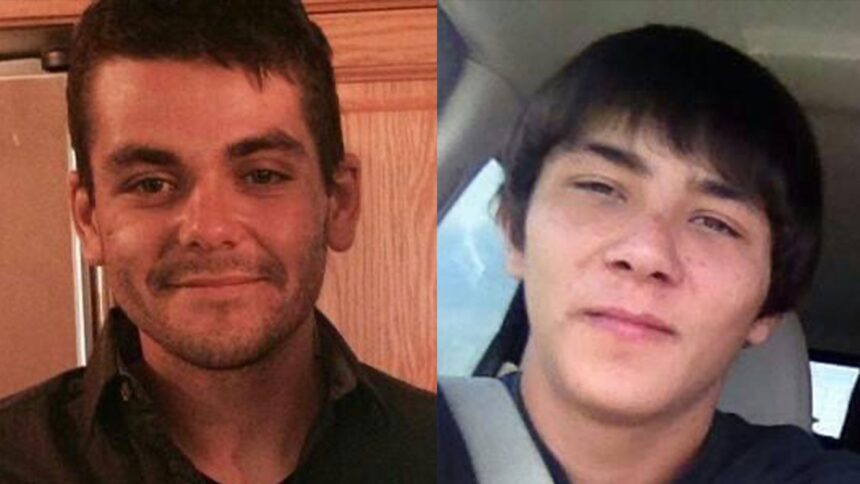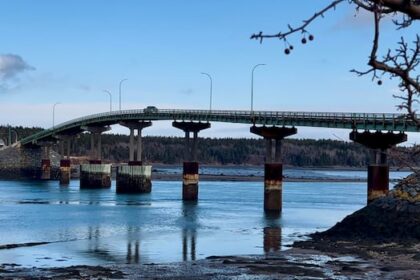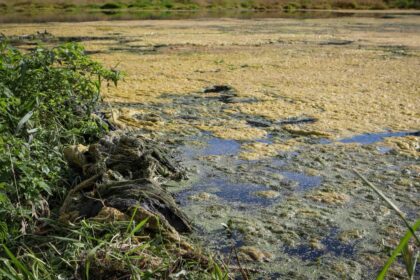Nearly a decade after Matty Fairman and Tyler Maracle drowned in the Bay of Quinte, Ontario’s chief coroner told their families police were wrong about how the fishermen’s boat sank. “The OPP theory of how the boat went down is not correct,” Dr. Dirk Huyer said last month during a private meeting on Tyendinaga Mohawk Territory, near where the men’s bodies and boat were found in 2015. As a result, OPP Commissioner Thomas Carrique requested that the Toronto Police Service reinvestigate the deaths of Fairman, 26, and Maracle, 21. The new investigation follows a two-year APTN Investigates probe that disputed the OPP theory that the fishermen drowned after overloading their boat with stolen fish. Our findings prompted Huyer to bring in his own experts to run tests last summer. The families finally heard the results of those tests on March 3. “It can be safe to assume that the vessel was not overloaded at the time of sinking,” Jami Buckley, of BYD-Naval Architects, told the families, as APTN Investigates’ cameras were rolling. Watch APTN’s unprecedented access to the meeting in Secrets of the Bay: Chapter 4—the latest episode in our investigative documentary series. Buckley confirmed the boat sank slowly with no signs of sudden movements or panic onboard. “If you’re in a situation of water is coming over the side, and you’re an experienced mariner, then you would expect there to be corrective action or trying to prevent it. We didn’t really see that on board here, which was a little strange,” said Buckley. Tyler Maracle’s 14-foot aluminum boat is a key piece of evidence the families believe will eventually lead to the arrests of the people they feel killed their children after the Toronto Police Service was asked to reinvestigate and figure out they drowned. Steve Mongeau/APTN Photo Fairman and Maracle disappeared April 26, 2015 after they had gone out in Maracle’s 14-foot aluminum boat, equipped for spearfishing at about 1:30 a.m. “They said, ‘We’re only going out for an hour. We’ll spear a couple of fish,’” recalled Fairman’s sister, Jenni Wannamaker. Their phones disconnected from a nearby cell tower at 3:09 a.m., and they were reported missing by 9 a.m. Items like gloves and chest waders were found floating in a shallow channel known as Telegraph Narrows, but not the men or their boat. “Everybody was looking… and they couldn’t find them,” said Tyler’s father, Robin Maracle. That included the OPP’s specialized underwater search and recovery unit that spent several days searching the channel with sonar, as did the Mohawk Fire Department with an underwater camera. Thirteen days later, a fisherman found the bodies floating in the channel. The boat was found nearby at the bottom of the same water. Inside was a net of rotting fish belonging to another man—who also owns land along the channel. Tyendinaga Police and the OPP — without weighing or counting the fish — quickly concluded the fishermen stole the net, which overloaded the boat and drowned. They were thieves. Case closed. But the families never believed it. They protested, and the OPP re-investigated in 2020, this time estimating the boat carried approximately 600 pounds of fish. In late 2023, APTN tested the boat on water, loading it with over 1,500 pounds. It still didn’t sink—not until three men physically pushed the side of the boat under water. We confirmed the vessel, a 1974 Smoker Craft Zephyr, was built to handle rough water with its flared bow. But before we could do any of that, we had to dig up the boat that was buried days after it was pulled from the bay under the pretense of a so-called Mohawk tradition. There’s more than 1,500 lbs. in the boat as reporter Kenneth Jackson quickly turns on the Bay of Quinte. This was part of the tests APTN conducted to determine how Matty Fairman and Tyler Maracle drowned. Our work led Huyer to bring in Buckley and forensic analyst, Eugene Liscio, of Ai2-3D. In addition to reviewing all the evidence, the pair were tasked with creating a computer simulation and running various scenarios of how the boat may have sunk the way it did. “Primarily, my work centres around documenting things in 3D… then rebuilding them digitally,” said Liscio. Buckley confirmed APTN’s results helped validate their computer simulation model. “It’s reacting in the same way as real life,” he said. They found no evidence the boat was moving when it sank. A crescent wrench was still lying on a seat. “It’s safe to say this thing is not flipping over… otherwise things would just go flying,” said Liscio. They concluded the boat swamped (filled with water)—not capsized. “As it’s going down, it will rock back and forth gently, because once you’re underwater it’s not happening fast. You still have some buoyancy there, but like once the water had come over into the boat, at a certain point, the mass of the water would have overcome the buoyancy that the vessel has and then it would have gone down,” said Buckley. The chief coroner of Ontario, Dirk Huyer, second from right, looks on as his two boating experts examine the boat used by Tyler Maracle in 2015 while his father, Robin Maracle, watches. Kenneth Jackson/APTN Photo It would take “considerable and sustained” effort to swamp the boat, he said. “You can kind of see it from the APTN video as well, like you have to kind of hold [the side of the boat] underwater for not just a moment, but hold it underwater with a sustained effort to overcome [the vessel’s ability to self-correct],” said Buckley. The experts offered four sinking scenarios. All except scenario Number 3 are considered to have “low” probability. Number 1: “Both people on one side hauling net that had been snagged. We felt like the likeliness for this would be pretty low. It would be a natural reaction to let go of the net or correct the weight distribution once water was coming over the gunnel.” Number 2: “A sudden movement or maneuver occurred where person one loses balance and falls overboard. Person two jumps in to help. Upon trying to re-enter the vessel on the same side, they have enough weight with wet clothes to submerge the gunnel and sink the vessel. Potential for this … is considered again to be low.” Number 3: “The vessel was affected by an external force and one or both gentlemen end up in the water. Either by the scenario above or an external force sinks the vessel to the bottom. There is not enough evidence or signs of this occurring on the vessel at the time of the survey.” “It wouldn’t take a lot or a big bump to knock somebody off their balance in the boat. But unfortunately, there’s just not enough there for us to say, either way, if anything happened like that.” Liscio added: “Yeah, especially a lateral, like something lateral. If it’s forward and backward, you’ll fall forward in the boat. But if it’s something lateral, something comes up beside you or whatever, it’s a little hard to detect. But it’s enough. It may throw you off that it can get you in the water.” Number 4: “The vessel is swamped by a wave of the right size and frequency. The potential for this seems low as the weather forecast on the night was reported to be calm. It could also be possible if another vessel passed by with a large enough wake. However, there is no evidence or reports of vessels operating in this area on the night in question. And just to add to that, it would take a pretty big wake, pretty steep wake to swamp the vessel.” Matty Fairman’s mother, Beverly Maracle and his sister, Jenni Wannamaker sit next to the water where Matty drowned. Steve Mongeau/APTN Photo The experts wouldn’t say for certain which scenario caused the boat to sink. Regardless, with the police theory disproven, the coroner’s office changed the manner of death from accidental to undetermined. “The manner of undetermined is provided when there is a competition between potential manners of death,” Huyer explained. In the updated coroner death reports for both fishermen, scenarios Number 1 and 2 were ruled out as “highly unlikely,” according to Dr. Paul Dungey, the regional coroner in Kingston, Ont. Dungey accepted that the fishermen either drowned by the third scenario (external force: homicide) or the fourth (a wave over the back of the boat: accident). However, Buckley had more to say about Number 4 during the meeting. “If you get into a certain wave pattern that is short enough with a small enough vessel, then you can kind of get into the wrong timing and have most likely a wave coming over the back,” said Buckley. “It’s a pretty small bay. I don’t think there’s big enough vessels that are transiting through there to create that.” It’s now up to the Toronto Police Service to investigate, marking the third different time the deaths have been investigated by a police service. Huyer said he’d be talking to Toronto police next week. “Everything has changed,” said Tyler’s mother, Tammy Maracle. “We’re going to find who did this to our boys.” Continue Reading
Police got it wrong about how Mohawk men drowned in 2015: Coroner

Leave a Comment









